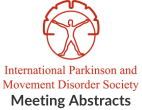Presence of neuropathy in most frequent hereditary cerebellar ataxia SCA1, SCA2 and FRDA in Serbian population
Objective: The aim of our study is to determine the frequency and pattern of neuropathy in patients with the most frequent hereditary ataxias in Serbian…Learnings from inaugural year of foundation sponsored genetic counseling and testing program for Spinocerebellar Ataxia (SCA) types 1, 2, and 3
Objective: To describe volume, genetic results, and participant perceptions of foundation sponsored genetic counseling and testing program for SCA 1, 2, and 3. Background: Molecular…The phenotypic spectrum and assessment of severity in patients of Spinocerebellar Ataxia-12.
Objective: To describe clinical phenotype, manifestations, and assess tremor severity using standard rating scale in genetically confirmed patients with SCA12. Background: Spinocerebellar Ataxia-12 (SCA12) occurs…Intronic FGF14 GAA repeat expansions are a common cause of ataxia syndromes with neuropathy and bilateral vestibulopathy
Objective: To report on the frequency of intronic GAA expansions in the fibroblast growth factor 14 (FGF14) gene in patients with an unexplained cerebellar ataxia,…Brain functional state mapping in resting state and network alteration in Spinocerebellar Ataxia Type 2 in comparison with healthy controls
Objective: The aim of this study is to map the brain functional network alterations by estimating functional connectivity of brain structures in spinocerebellar ataxia type 2.…Machine learning-based classification of SCA1, SCA2, and Healthy controls using graph features
Objective: To differentiate genetic variants of spinocerebellar ataxia (SCA1 and SCA2) and healthy controls using machine learning on resting-state functional Magnetic Resonance Imaging graph features.…Analyzing gait videos to identify and evaluate spinocerebellar ataxia types 1 and 3
Objective: To analyze videos of gait to: 1) identify spinocerebellar ataxia types 1 and 3, and 2) predict scores on the gait task section of…Spinocerebellar Ataxia Type 5: an Unusual Infantile Onset with Development Delay
Objective: Spinocerebellar Ataxia Type 5 (SCA5) is an uncommon cause of cerebellar ataxia with onset generally within the third and the fourth decade and a…Electrophysiology and clinical description of Tremor in Spinocerebellar Ataxia 12 (SCA12)
Objective: To describe the clinical and electrophysiological characteristics of tremor in SCA12. Background: There is scarcity of literature on tremor of SCA12 patients which is…Unravelling Hidden Mutations Behind the Heterozygos SYNE1 Genotype
Objective: To present case series of four patients of heterozygous for SYNE1 mutation with phenotype consistent with cerebellar ataxia. Background: Recessive cerebellar ataxias are defined as disorders with autosomal recessive…
- « Previous Page
- 1
- …
- 3
- 4
- 5
- 6
- 7
- …
- 14
- Next Page »
